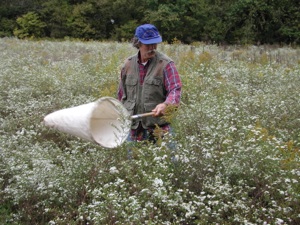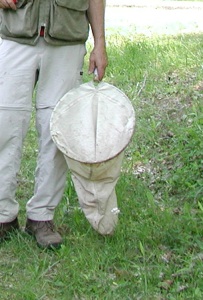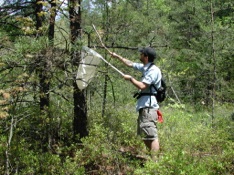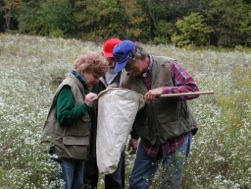sweep nets

A sweep net is a specialty net of robust construction with reinforced fabric along the rim, heavy opaque cotton net bag, stiff heavy wire rim and a relatively short and stout handle (figure 1). The sweep net, as the name implies, is swept back and forth through the target vegetation for a period of time and then the contents inspected for beetles (figure 2). All types of habitat should be sampled and many unusual species are taken in this manner. Varying the times of day will turn up different species and evening sweeping can be done even after dark. Many beetles will climb vegetation in the evening just prior to taking dispersal flights at dusk. This can be an extremely productive time to utilize the sweep net. Many collectors will try the sweep net upon arriving at a new location to get a “feel” for the taxa that are present. This is a great method for roadside vegetation collecting as most of the vegetation is at the perfect height for sweeping approx. 1-3 feet high. The main draw back to sweeping is that little knowledge is gained regarding which host plants the beetles that are captured came from unless the sweep area is monotypic with respect
to plant species. Many coleopterists will begin sweeping an
area and if any beetles of interest are secured then a detailed
search of the vegetation is carried out to determine the host
associations.



(figure 1). Typical sweep net with robust
construction. This is a BioQuip Sweep Net
with proven reliability.
(figure 2). OC Member, Dick Maxey, demonstrating the proper use of a sweep net. Note the large open field of various blooming vegetation. Calamus Swamp, Circleville, Ohio.
Ben Diehl using the sweep net as a modified beating sheet owing to this piece of equipment’s versatility.

Inspecting the sweep net contents for beetles. Caution should be exercised as some species will take flight quite rapidly upon opening the net bag. OC members Cheryl Early, Dave Horn, and Dick Maxey.
